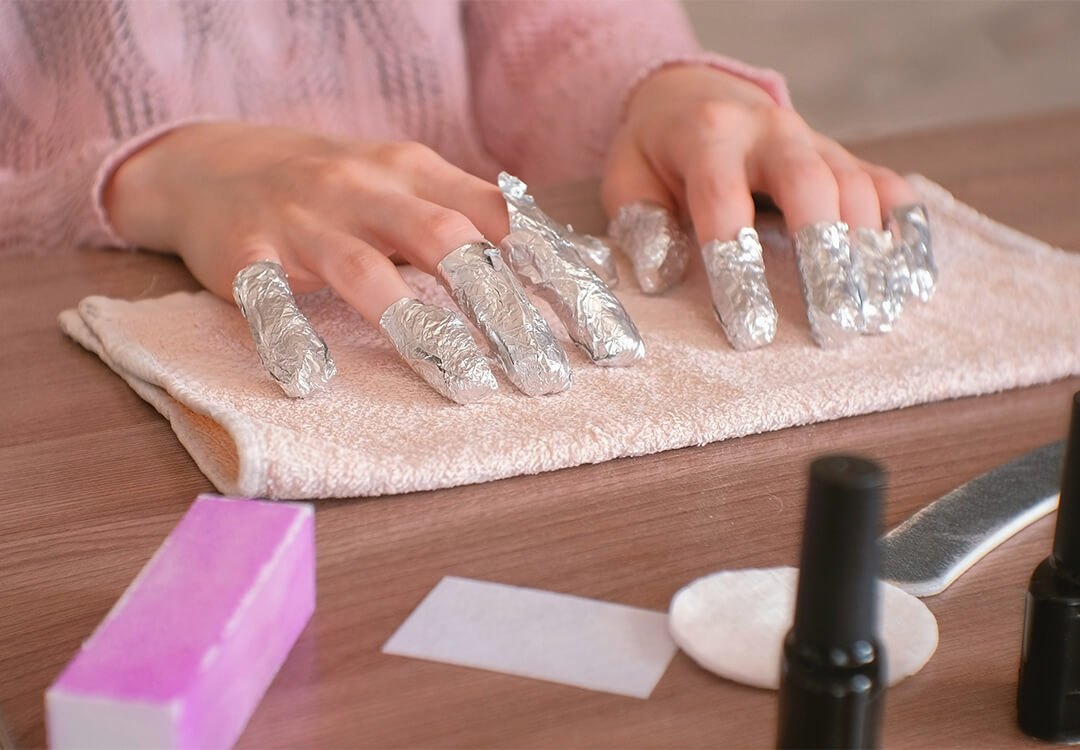Acrylic Nail Removal Process

After you have finished repeating the process of soaking and scraping the acrylic off of your nails you may notice small bits of acrylic still left on your nail beds.
Acrylic nail removal process. Poor quality or unsuitable removers can also dry out or irritate the skin around the nail. You might see the nail layers or surrounding skin peeling away. You see nail primers are used to amplify the bond between the acrylic and your natural nails.
Use a nail tip clipper to cut off the excess length of your acrylics. It is a thin and flexible piece of steel that she can insert in the lifted acrylics and gently rock it back and forth to separate the acrylics further until it comes off the nail. Begin at the nail.
Then put the wet cotton on your nails. Have a bowl of acetone to soak your hands in it for some time. Acrylic Nail Kits removal process Apply Vaseline on fingers and cuticles.
Rather than continue to soak and scrape you can remove these residual pieces of acrylic by filing with your nail buffer. The removal process for acrylic nails requires a lot of filing and use of chemicals. A couple of months ago I got acrylic nails for the first time and was surprised by how much I truly deeply loved them.
Cut them as close as possible to your natural nails. Manicurists spoke with Allure writer Sara Tan about how to remove acrylics without damaging. Its all too tempting to pull off a nail once it begins to come loose or if its broken.
Continue to repeat the process of soaking and pushing acrylic. The warm towel can be set on tinfoil to warm up Acetone to have the best result. Once the acrylic has become more viscous gooey remove your hand and began to carefully scrape away the acrylic with the cuticle pusher.









